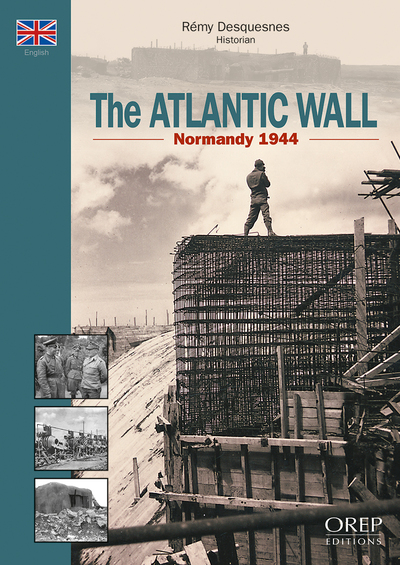LE MUR DE L'ATLANTIQUE (GB)

Disponible
Nombre de pages : 32
Dimensions : 170 mm x 240 mm
Poids : 137 gr
Prix : 6.70 €
Livre broché
EAN : 9782815107372
Distributeur : OREP
Nombre de pages : 32
Dimensions : 170 mm x 240 mm
Poids : 137 gr
Prix : 6.70 €
Livre broché
EAN : 9782815107372
Distributeur : OREP
Auteur(s) : DESQUESNES Rémy
Editeur(s) : OREP
Date de parution : 31 mars 2023
Genre(s) : HISTOIRE
Langue(s) du texte : Français
By entering the Soviet Union, in June 1941, Hitler was convinced that the military campaign in the Russian Steppes would be concluded by
Christmas the same year. However, this proved to be a huge miscalculation. Berlin was certain that the Red Army was on the verge of surrender, but the latter had adopted a defensive stance in the Moscow sector in December 1941, forcing the Wehrmacht into retreat. Simultaneously, following the Japanese attack on Pearl Harbour, the United States entered the war, hence reinforcing the British efforts. Trapped on both fronts, Hitler decided to finish with the Soviet Union before returning his efforts against the Anglo-Saxon Allies. According to the German dictator, there was no immediate threat of a large-scale landing operation. Nevertheless, in order to protect his rear, whilst the majority of his troops were concentrated on the Russian front, he decided to build a line of fortifications along the Western European coastline. The construction of this new Great Wall of China was entrusted to the Todt Organisation, the agency in charge of the Wehrmacht's building projects, using manpower misappropriated across Europe. In the spring of 1944, the Atlantikwall was far from complete: only the major ports had been effectively fortified.
By landing between the ports of Cherbourg and Le Havre, on the inadequately fortified Normandy coastline, the Allies were to bypass the
Reich’s defensive system. This book is designed as a guide describing the most interesting vestiges of the German fortification on the Normandy coast (coastal artillery batteries, command posts, radar stations, subterranean galleries...).
Christmas the same year. However, this proved to be a huge miscalculation. Berlin was certain that the Red Army was on the verge of surrender, but the latter had adopted a defensive stance in the Moscow sector in December 1941, forcing the Wehrmacht into retreat. Simultaneously, following the Japanese attack on Pearl Harbour, the United States entered the war, hence reinforcing the British efforts. Trapped on both fronts, Hitler decided to finish with the Soviet Union before returning his efforts against the Anglo-Saxon Allies. According to the German dictator, there was no immediate threat of a large-scale landing operation. Nevertheless, in order to protect his rear, whilst the majority of his troops were concentrated on the Russian front, he decided to build a line of fortifications along the Western European coastline. The construction of this new Great Wall of China was entrusted to the Todt Organisation, the agency in charge of the Wehrmacht's building projects, using manpower misappropriated across Europe. In the spring of 1944, the Atlantikwall was far from complete: only the major ports had been effectively fortified.
By landing between the ports of Cherbourg and Le Havre, on the inadequately fortified Normandy coastline, the Allies were to bypass the
Reich’s defensive system. This book is designed as a guide describing the most interesting vestiges of the German fortification on the Normandy coast (coastal artillery batteries, command posts, radar stations, subterranean galleries...).
